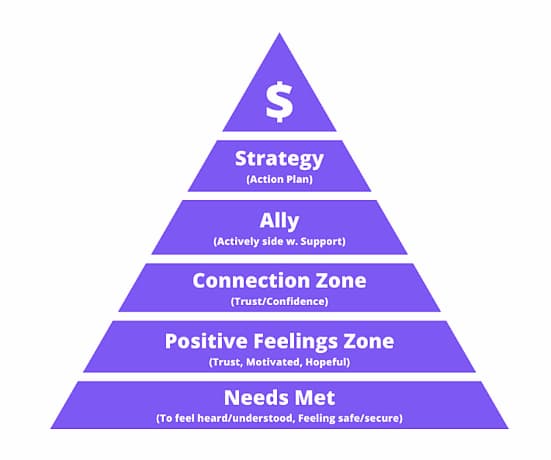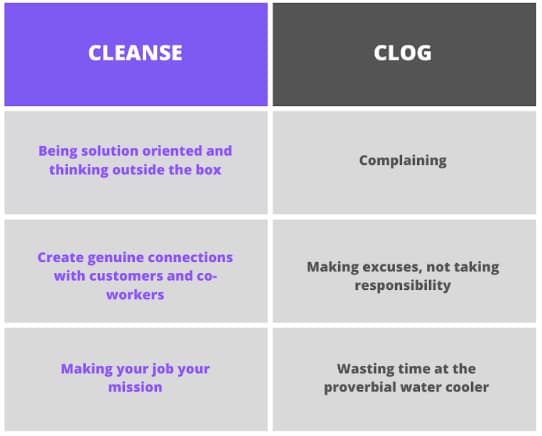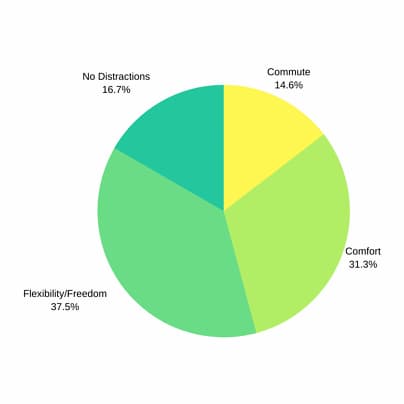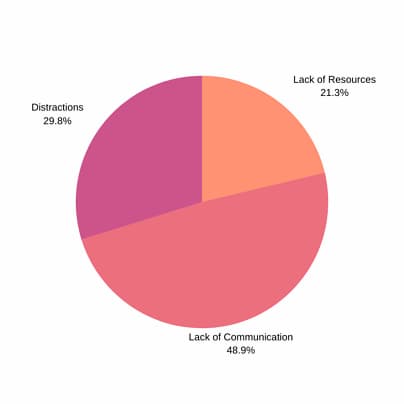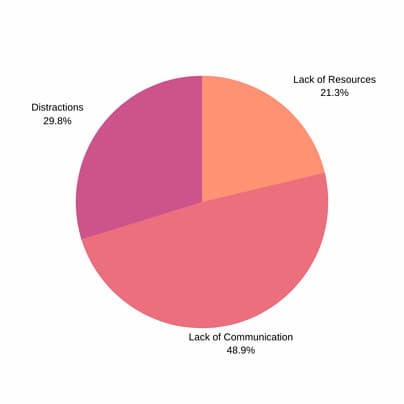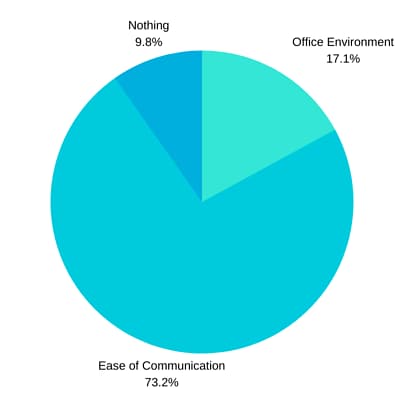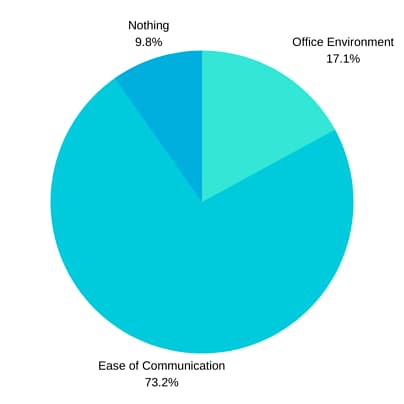Work From Home Tools We Can't Live Without
If you were only able to use one type of software to work from home, what would it be? We asked our team to uncover the work from home tools that are essential for building the perfect work from home setup. Here’s what they said:

The results are in. An instant messaging tool is essential for achieving the perfect work-from-home setup. Instant messaging is an easy way to keep in touch with your team without being on video or talking on the phone. It helps protect your time because you can quickly ask questions, chat, and give updates without completely stopping the work you’re doing.
Instant Messaging Tools Worth Checking Out
- Arbeit Connect (shameless plug)
- Slack
- Discord
The Ideal Work From Home Environment
If you could change anything about your home office setup, what would you change? We asked our team to uncover the environmental qualities that would make their work from home setup even better. Here’s what they would change:

The results are in – more separation from living areas is the most important quality of the perfect work from home setup. Working from an area in your home that is separate from your other living spaces helps promote healthy boundaries between your work and personal life.
Being able to physically shut the door to your workspace at the end of the day is just what you need to distance yourself from your ongoing tasks & to-do lists that are work-related. When your work from home setup is separate from the living areas of your home/apartment (ie. bedroom, kitchen, living room) you can recharge from the workday in those spaces.
Separate Your Work From Home Setup & Living Space
Use these items to separate your work from home setup & living space when you don’t have a dedicated room for your home office.
Work From Home Setup Inspiration
Check out the work-from-home setups from a few of our team members to inspire your own.
Greg Jones, Customer Research Analyst
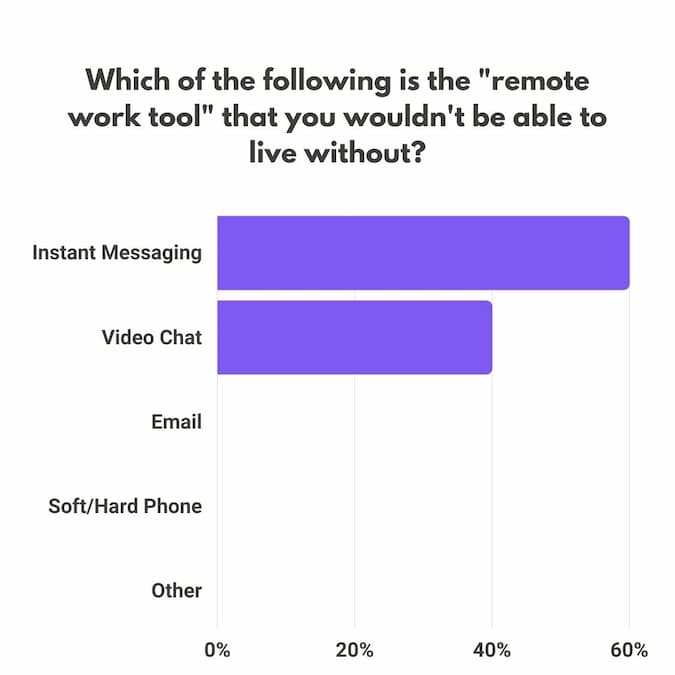
What We Love About This Setup:
We love the energizing green wall color, painted gold leaves, organization and detailed notes that make up this nature-inspired work from home setup.
Lucas Tardioli, Sr. Back-End Developer
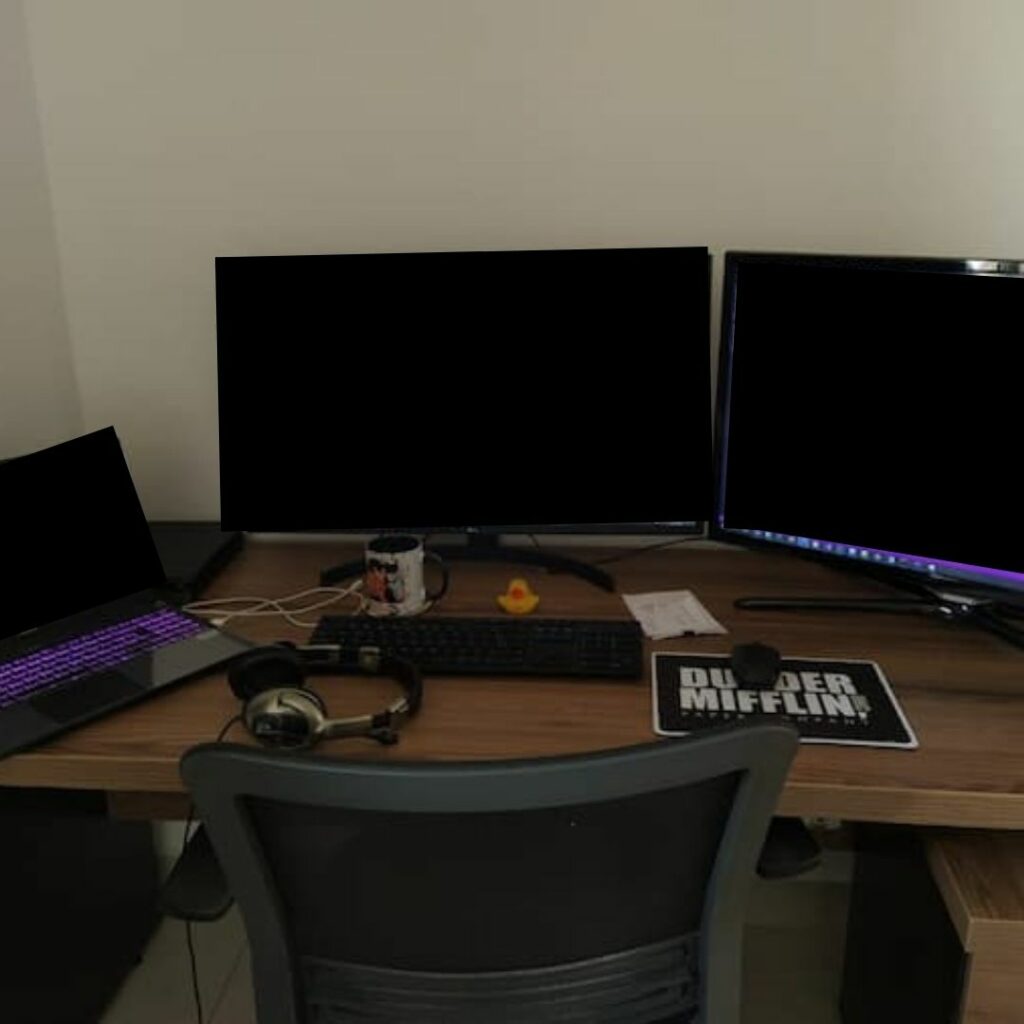
What We Love About This Setup:
We love the mousepad inspired by The Office, three screens for productivity, and the comfortable desk chair in this minimalist work from home setup.
Kaitlyn Filippi, Product Manager
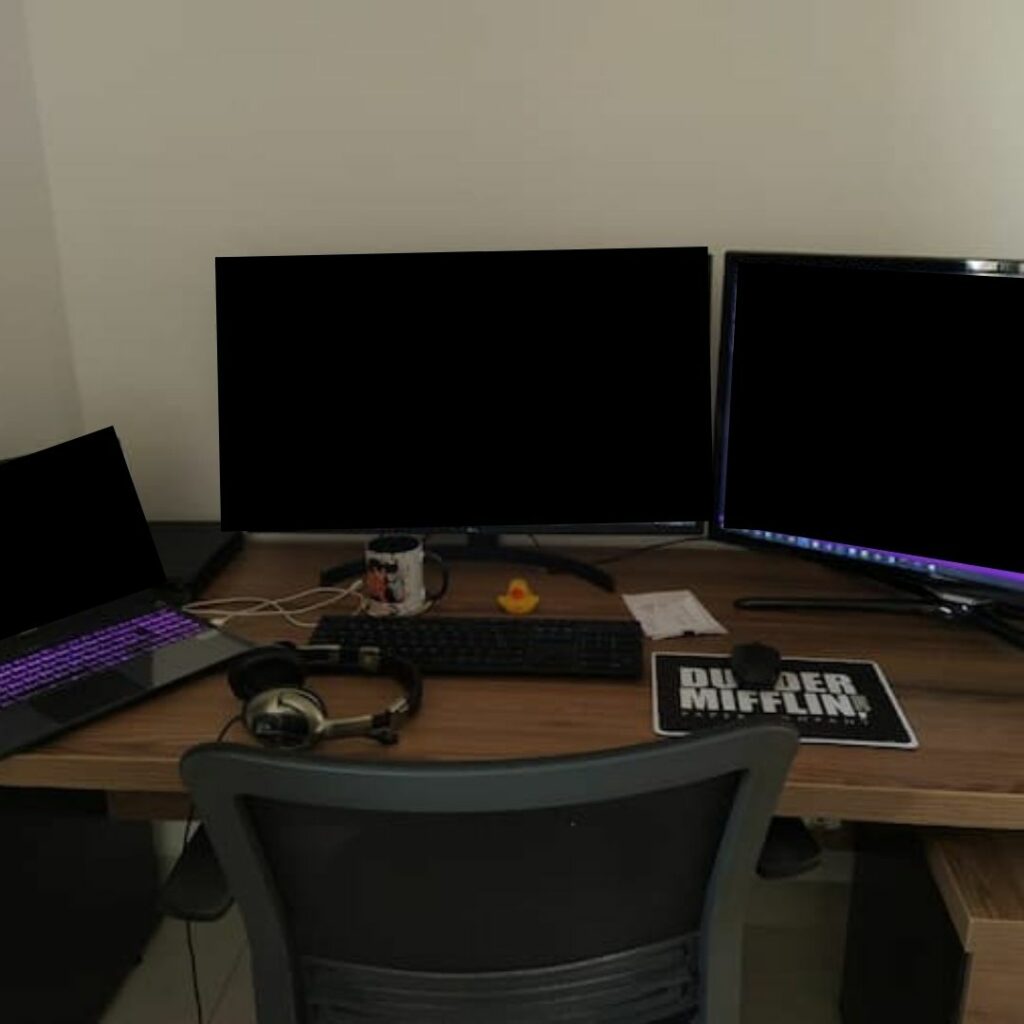
What We Love About This Setup:
We love the Edison light bulb, plants, and space-saving desk in this Arizona work from home setup.
Make Space to Recharge at the End of the Workday
A lot of things have changed since 100% of our team started working remotely full-time. “Recharging after work” is one of those things that our team unanimously agreed had changed.
Your “recharge” environment is just as important as your “work” environment.
Here are some tips from our team for creating the perfect “recharge” environment while working from home.
Qualities of a Perfect “Recharge” Space
- Space/equipment for exercising
- Connection to the outside world
- Fresh air
- No computers!
- Comfortable seating
Co-Working Spaces: The Perfect Remote Work Setup?
Why would you or wouldn’t you consider using a co-working space? We asked our team about their feelings towards co-working spaces to uncover whether they have the potential to be the perfect remote work setup.
Here’s what they had to say:
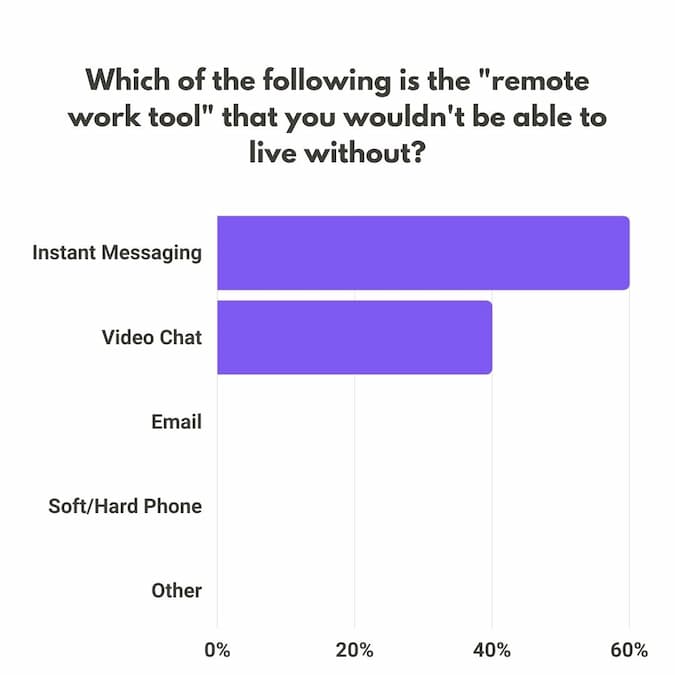
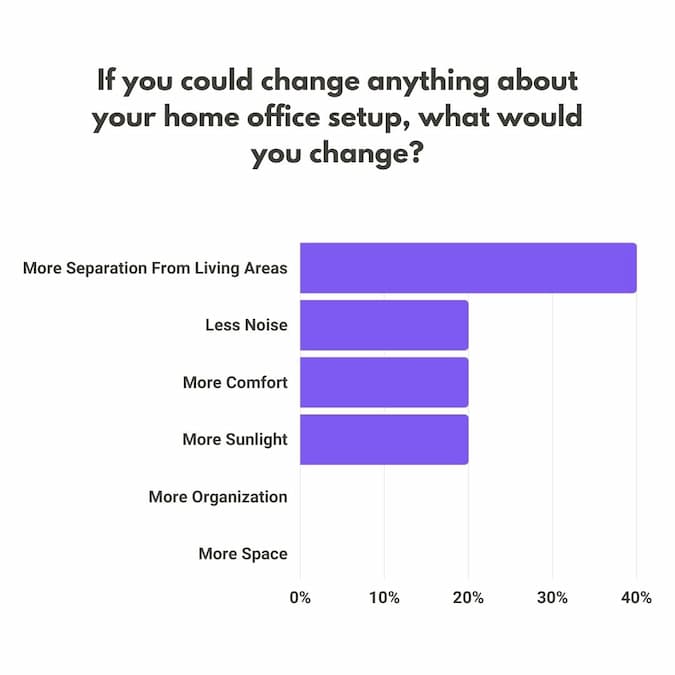

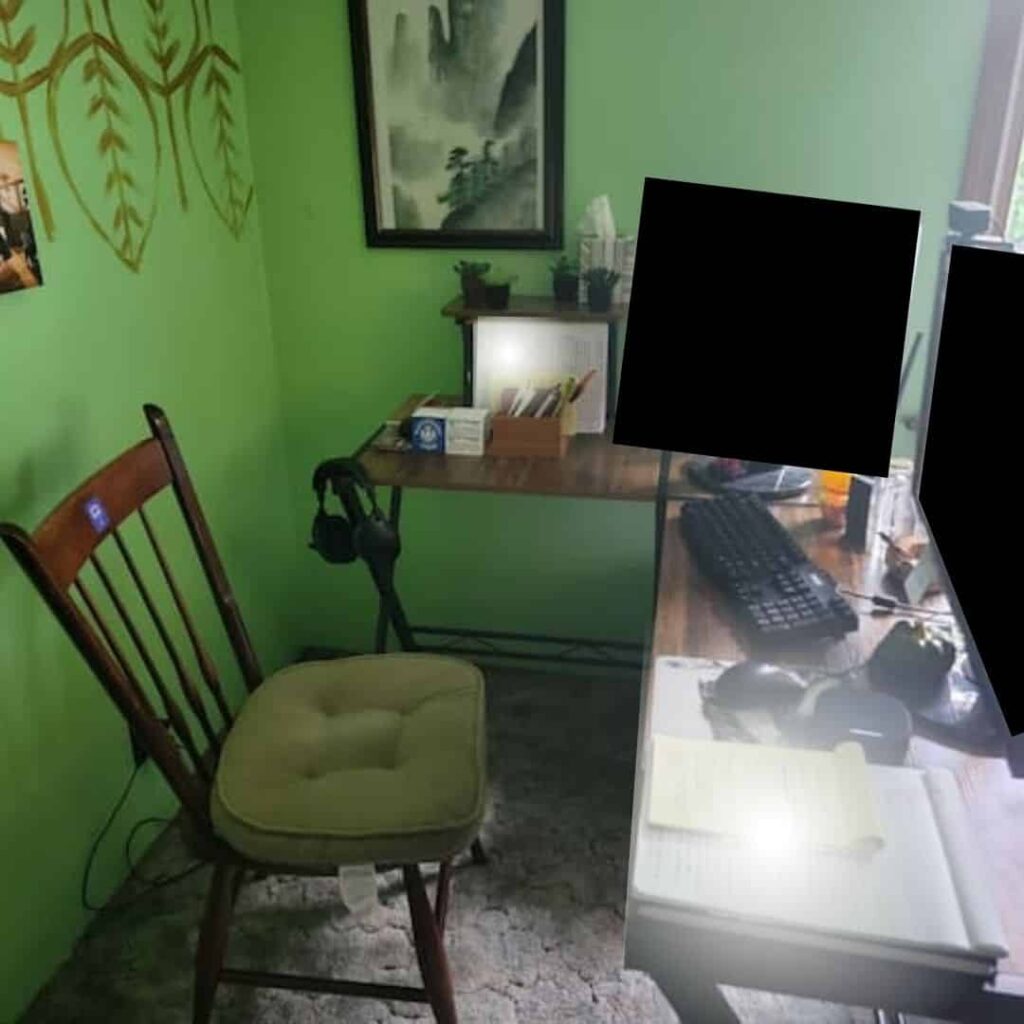

The majority of our team agreed that the pros of coworking spaces outweigh the cons. This is something to consider when deciding to invest in your work-from-home setup. Give a coworking space a try! You might find that you enjoy it more than working from home.
Pros of Co-Working Spaces
 Opportunity to reconnect with coworkers in a shared space
Opportunity to reconnect with coworkers in a shared space
 Office environment is refreshing after over a year of working from home
Office environment is refreshing after over a year of working from home
 Ability to work side-by-side with others and learn from them
Ability to work side-by-side with others and learn from them
Cons of Co-Working Spaces
 Expensive if only using a few times each month
Expensive if only using a few times each month
 Lack of comfort & equipment
Lack of comfort & equipment

